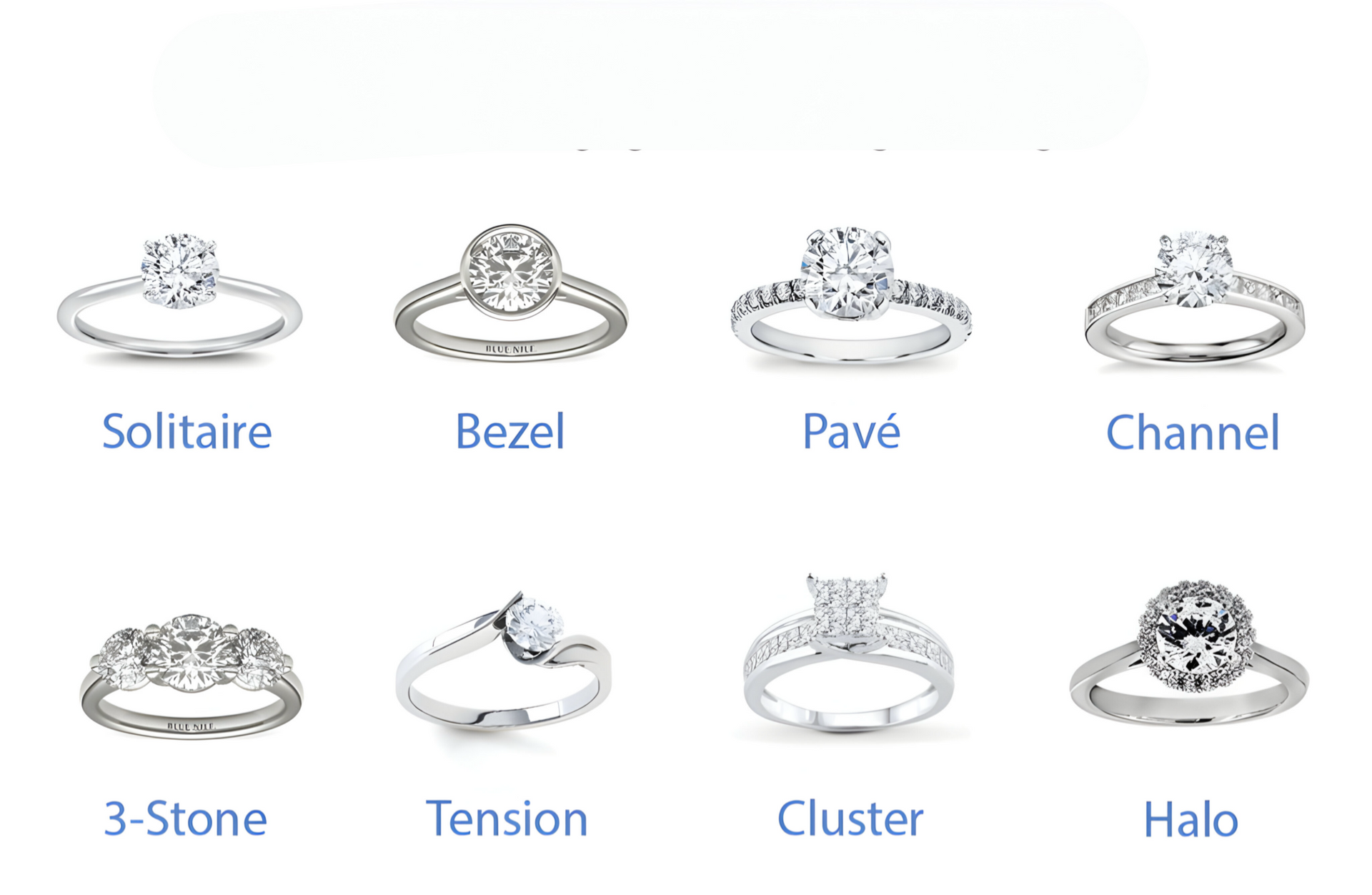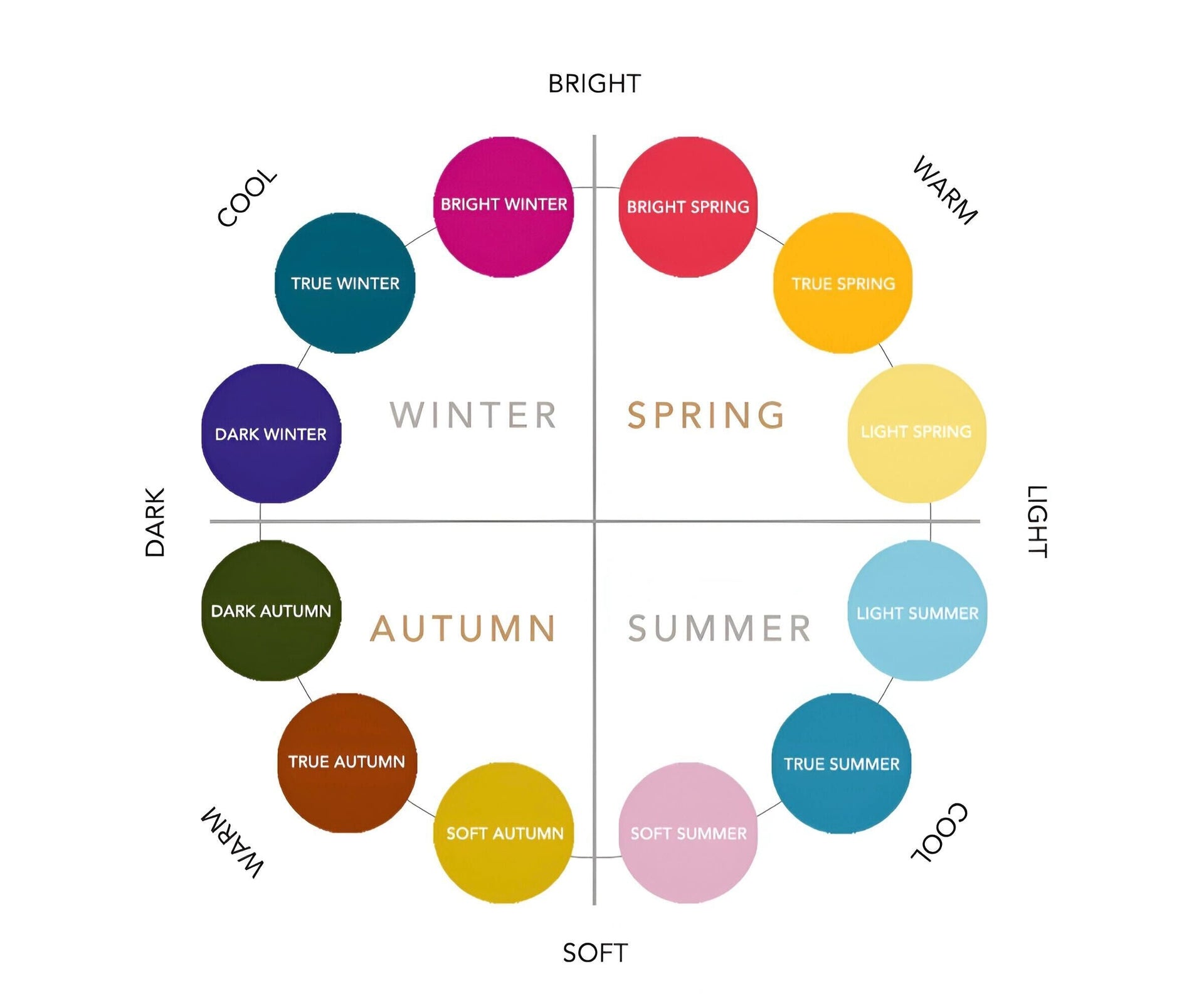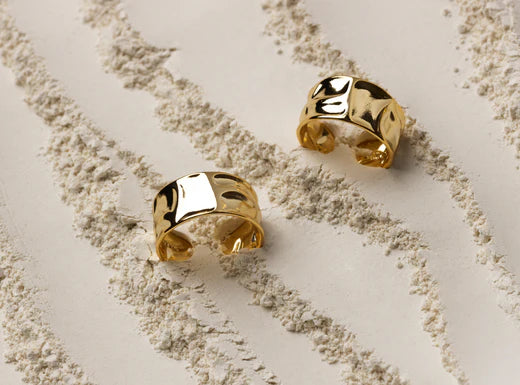Here is a comprehensive guide to the most common types of gemstone settings used in jewelry:
Prong Setting
The prong setting is one of the most popular and classic stone settings, especially for engagement rings. It features thin metal prongs (usually 4 or 6) that extend up from the band to hold the gemstone securely in place.
Advantages:
- Allows maximum light to enter the stone, enhancing brilliance and sparkle
- Minimalist design that showcases the stone
- Versatile and works with many stone shapes
Disadvantages:
- Prongs can snag on clothing or hair
- Less protection for the stone compared to other settings
- Prongs may loosen over time and require maintenance
Bezel Setting
In a bezel setting, a thin metal rim surrounds and holds the gemstone, either fully or partially. This creates a smooth, modern look.
Advantages:
- Very secure and protective of the stone
- Smooth profile that won't snag
- Can make stones appear larger
- Good for active lifestyles
Disadvantages:
- Less light enters the stone, potentially reducing brilliance
- More metal visible compared to prong settings
Channel Setting
Channel settings feature small stones set in a row between two parallel metal channels. This is popular for wedding bands and as accent stones on engagement rings.
Advantages:
- Secure setting that protects stones
- Creates a line of continuous sparkle
- Smooth surface that won't snag
Disadvantages:
- Individual stones are less prominent
- Can be difficult to resize
Pavé Setting
Pavé (pronounced "pa-vay") uses many small stones set closely together, held in place by tiny beads of metal. This creates a surface that appears to be "paved" with diamonds.
Advantages:
- Creates impressive sparkle and brilliance
- Can make a piece look more luxurious
- Versatile design element
Disadvantages:
- Small stones may be more prone to falling out
- Can be difficult to resize
- May snag on fabric
Halo Setting
A halo setting features a center stone surrounded by a "halo" of smaller stones. This style has become very popular for engagement rings in recent years.
Advantages:
- Makes the center stone appear larger
- Adds extra sparkle and brilliance
- Versatile design that works with many stone shapes
Disadvantages:
- More complex design may be more expensive
- Trend-sensitive style that may look dated in the future
Tension Setting
In a tension setting, the stone appears to be held in place by pressure from the band itself. In reality, there are usually small grooves cut into the metal to secure the stone.
Advantages:
- Unique, modern look
- Allows maximum light to enter the stone
Disadvantages:
- Less secure than other settings
- Limited to harder gemstones like diamonds
- Difficult to resize
Flush Setting
Also known as a gypsy setting, flush settings feature stones set directly into the metal so they sit flush with the surface.
Advantages:
- Very secure and protective of stones
- Smooth profile ideal for active lifestyles
- Modern, minimalist look
Disadvantages:
- Less light enters stones, potentially reducing brilliance
- Stones appear smaller than in raised settings
When choosing a setting, consider factors like your lifestyle, the type and size of stone, your personal style preferences, and your budget. Each setting type offers unique advantages and can dramatically affect the overall look and wearability of the piece. Consulting with a professional jeweler can help you select the best setting for your specific needs and desires.



